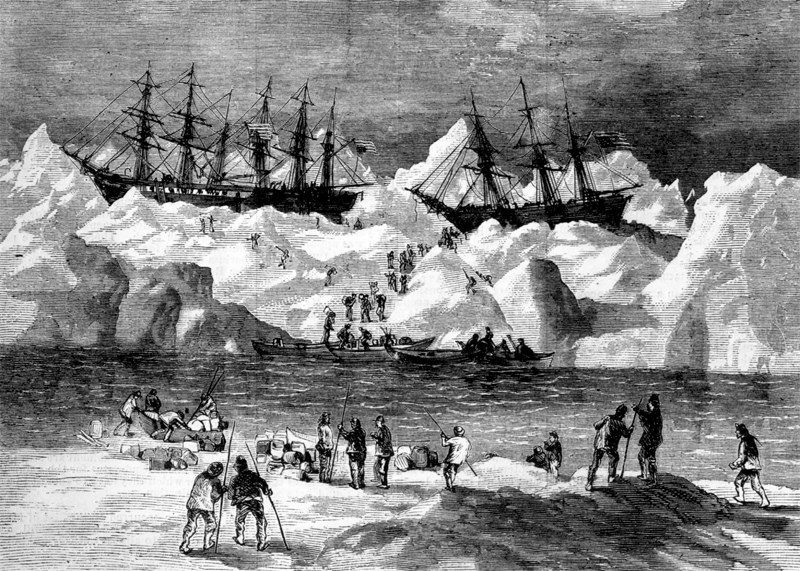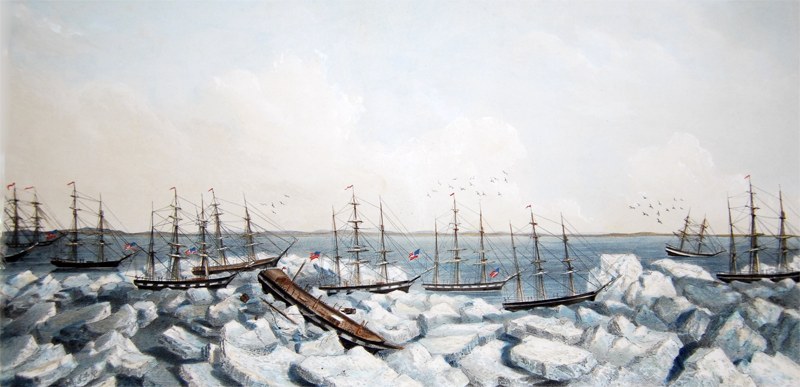
Scientists Discover Long-Lost Whalers
If you’re always looking for ‘silver linings’, you’ll be interested in recent discoveries made by National Oceanic and Atmospheric Administration (NOAA) scientists thanks to diminishing sea ice in the Arctic.

Early this month the agency announced discovery of the remains of two sail-powered whaling ships which, along with 31 others, became trapped by pack ice in September 1871 — 144 years ago — in Arctic latitudes off Alaska’s northwest coast. All 33 ships had to be abandoned, leaving 1,200 crewmen stranded in the icy wasteland ashore. Within a few weeks the entire fleet had broken up and sunk to the bottom. Incredibly, though, all of the shipwrecked crewmen were eventually rescued by seven additional whaling ships that had been operating nearby — but in order to do so, those vessels had to jettison their valuable cargo of whale oil and other supplies.

According to the NOAA report, "With less ice in the Arctic as a result of climate change, archaeologists now have more access to potential shipwreck sites than ever before. . . Using state-of-the-art sonar and sensing technology, the NOAA team was able to plot the ‘magnetic signature’ of the two wrecks, including the outline of their flattened hulls. The wreck site also revealed anchors, fasteners, ballast and brick-lined pots used to render whale blubber into oil."
But as fascinating as it was to close this chapter of maritime history, researchers are naturally wary of longterm effects of diminishing sea ice and melting permafrost — a climatic wild card if ever there was one.
